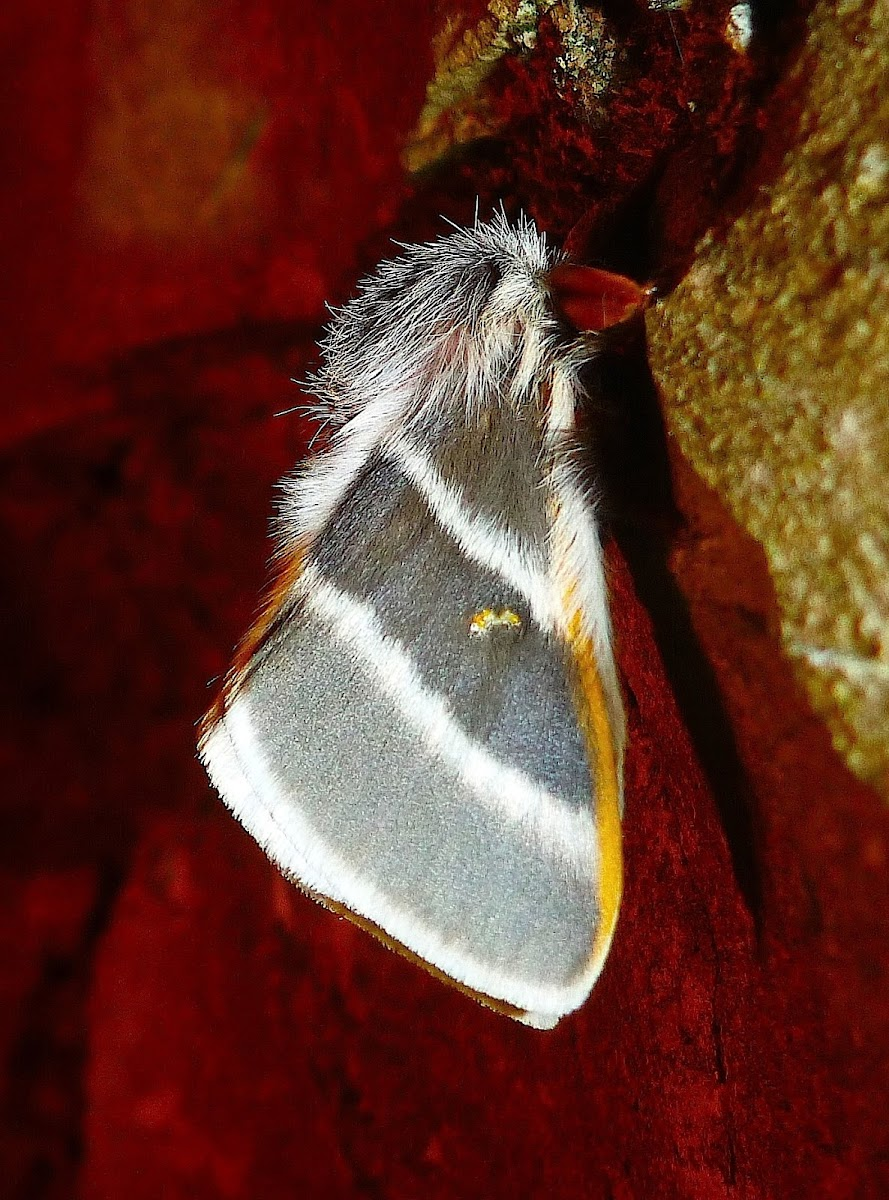Yes, Hemileuca mania has traditionally been considered a different species from Hemileuca maia. Automated "correction" software loves to confuse the two, which is typical of automated "correction" software and why we should turn it off. H. maia is very familiar to humans from the East Coast to the Central Plains, from the Gulf of Mexico up into human-inhabited Canada. H. mania is apparently very poorly documented, and it lives in Mexico and Central America. (It's considered a native species, and threatened, in Panama.)
However, the Internet is more informative about this species now than it was in 2013, when I wrote that it had been found in Veracruz and that was about all the Internet had to say about it.
Photo by Lauren Zarate. Though more gray than rose-brown, it was found in Mexico (clinging to a stone wall, as shown) and does resemble museum specimens of mania. The underside of the wings is pinkish white. This identification has not been verified by a qualified entomologist. When disturbed, the moth not only curled up and dropped to the ground, as if it were still a caterpillar who was protected from falls and predators by its bristles, but also expelled a dark fluid from its back end as if it were dying; but it was only playing dead. Photo essay at https://www.projectnoah.org/spottings/19379290 .
The color of the wing scales varies from rose to brown. Females may tend generally to be more pinkish and males more drab brown, as observed by Dyar n the nineteenth century,,but Dyar had access to a rather small sample group. Museum specimens faded quickly to gray. The band of color with an eye-like spot is visible on this species' fore wings, as on other Hemileucas, but it is said to be subtle in the male. In museum specimens the bands are conspicuous but the color scheme is different; then bands and inner part of the wings are about equally faded, the outer aprt of the fore wings and the hind wings fadee to white.
It is said to be capable of being a great nuisance, because it eats the native grasses that cattle eat. Eating Hemileuca caterpillars is said to make cows sick. It also eats the leaves of cornstalks in the field. However, it is not recognized as a major agricultural pest. For reasons unknown, mania seems to have some sort of healthy instint to stay away from humans.
Documentation of the early stages of this moth's life have yet to be posted on the Internet.

No comments:
Post a Comment